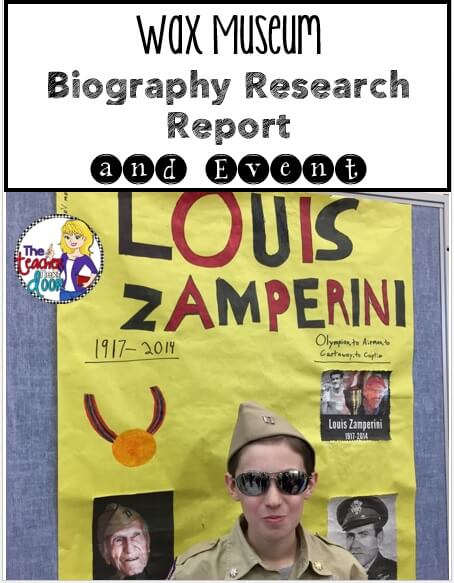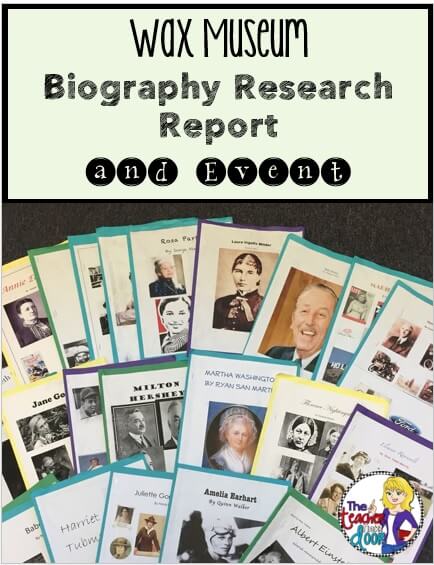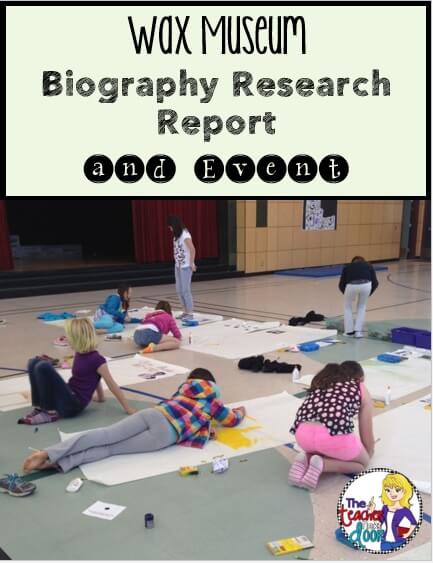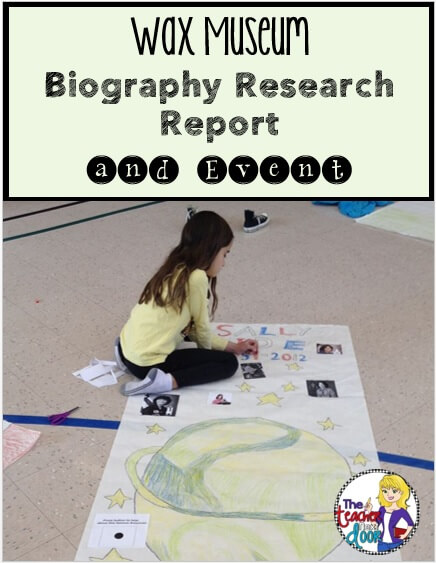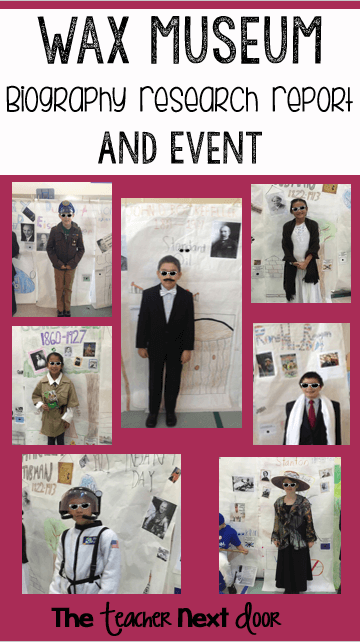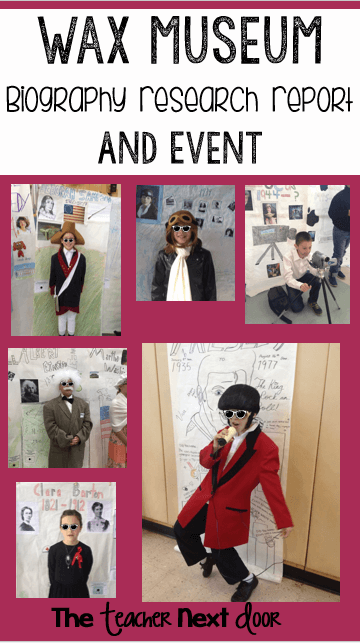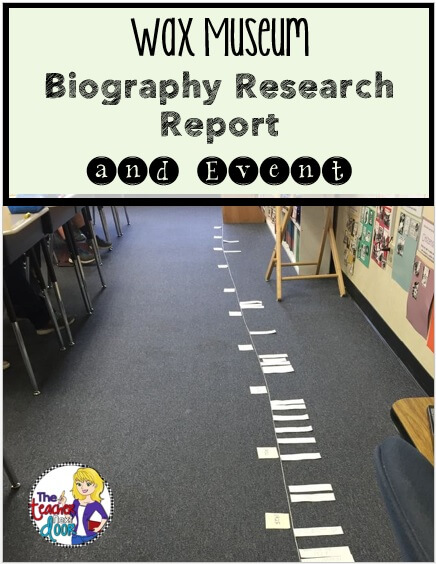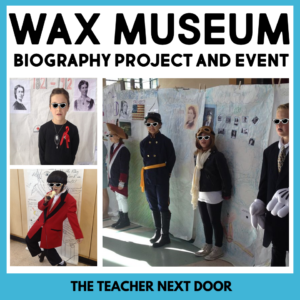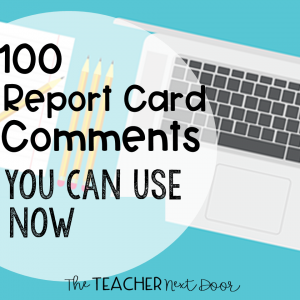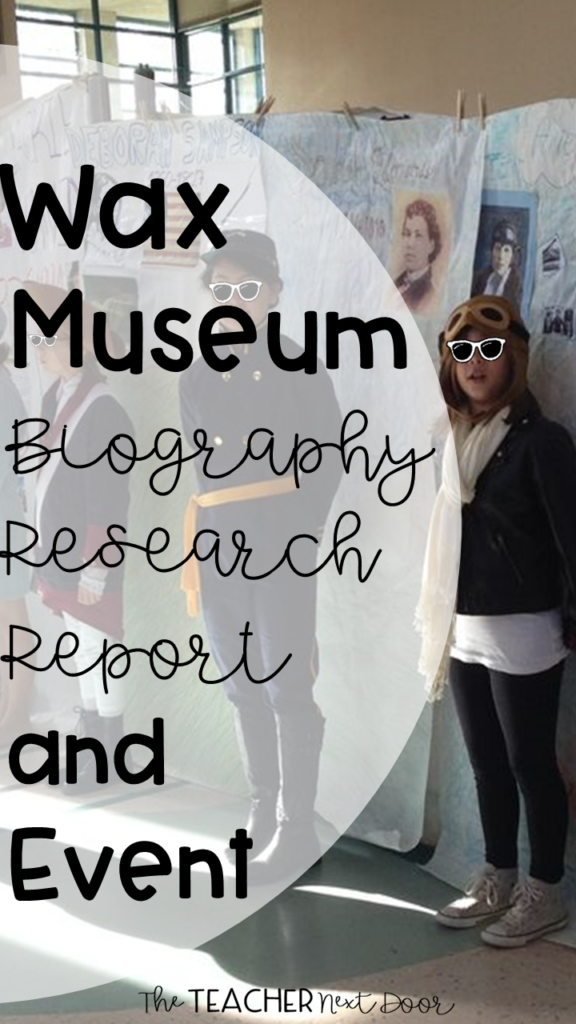
It’s not just how darn cute the kids look, or how much the parents oooh and ahhh over what a great event it is, (we all need those pats on the back) but it’s the fact that I know how much the kids have gotten out of this project and how hard they’ve worked to get to this special day.
I have to say it’s one of the highlight events for me each year, and it’s one I never get tired of. If you’ve never been to a Wax Museum, you’re in for a treat!
All of the kids are in costumes, portraying well-known historical figures, and standing in front of their backdrops as still as can be (or as still as a ten year old can be). Wax Museum visitors (parents and the other kids from our school) walk around, looking at the famous people and pushing the button on the backdrop, to hear the child tell them a little bit about his/her life and why he/she is important. Great stuff!
So, exactly how do we put together a Wax Museum?
Here are the steps:
1. Choosing a Famous Person and Finding a Biography
First, we go to the library and I take my trusty cup full of Popsicle sticks with the kid’s names on them. When we get there, I pull sticks to see who gets to look for their famous person biography first.
The kids know my criteria for selecting a famous person to study, but of course, you can come up with your own requirements. My rules are that the person must have been an American (5th grade studies American history, so it reinforces that), must have been an admirable person and have contributed something positive (no outlaws/criminals), must be dead or near-dead (they always laugh at this rule but I just want to avoid having biographies of 30 year olds), must have been some kind of groundbreaker if he/she is a sports figure or an entertainer (Jackie Robinson is good but Michael Jordan isn’t).
Finally, the kids need to be able to find an actual book about that person, because I want them to read an entire story about them before they catch snippets of him/her on the internet. Once they find a book and check in with me to be sure we don’t have any duplicates, I tell them to take the book home and to read their biography as part of their required reading homework.
2. Researching and Taking Notes
Before we start researching, we go over how to take notes (and not write whole sentences) and then I give the kids a research handout with specific categories to add notes to. The kids have several weeks to gather information, either at home or at school and then I have a due date for the notes to be checked.
I learned early on that if there is no due date when it’s time to write, I’ll have ten kids who can’t write because they need more notes. The checking of the notes is quick but helps me know who needs to dig a little deeper to get ready to write.
3. Writing the Reports in Class
After a lesson on organizing notes in time sequence and how to “be the author” and tell the story well, the kids are ready to write their rough drafts. We focus on doing a page each day so it’s not too overwhelming. When the rough draft is done, the kids take them home to type.
Luckily, our school is in an area where almost everyone has computer access. I used to give the kids a choice to write or to type, but since keyboarding skills are part of the testing requirements, I figured it would give them good practice AND it is so much easier to read for grading.
4. Homework: Gathering Pictures
Besides research, another homework assignment is to gather some pictures for this project. The kids need to make a cover sheet, using a single picture of the famous person (or a picture collage) and his/her name, plus their own.
When the kids bring these to school, they choose their construction paper color and we fold the 12 x 18 paper in half and glue the cover sheet to the folder. The second part of the homework is to bring in a few pictures to add to their backdrop.
5. Make the Backdrop
We head to the gym for this project because we need lots of room to spread out. I tell the kids to take off their shoes (which they LOVE), because we don’t want our backdrops to get dirty from our shoes.
These backdrops are made from butcher paper (five and a half feet long) and can be any color, but I tend to use white. Each child decorates his/her backdrops with the homework pictures of the famous person studied, as well as a hand-drawn background.
On the Wax Museum day, the child will be standing in front of this backdrop, in costume, portraying the person he/she studied. Besides printed out pictures and drawings, we also glue on a button (a piece of paper) that says ‘Push here to hear about this famous American.”
6. Homework: Memorizing Speeches and Gathering Costumes
I give the kids a handout with a sample speech written on it and we talk about what makes a good speaker, like eye contact, posture, voice volume and confidence. The kids take this home and create a short speech to give for the Wax Museum Day when someone pushes their button.
When this homework is due (a few days before the Wax Museum) each child recites the speech in front of the whole class. I try to keep it positive but do like to use this as a learning opportunity for speaking in front of an audience, which is a great lifelong skill to have.
The next homework assignment is to put together a costume for the Wax Museum Day. They need to beg, borrow or steal (or sometimes buy a few pieces from Goodwill or online) to create a costume that represents their famous person well. I stress that they don’t have to spend a lot or even any money but they do need to be creative to pull something together.
I am always happily surprised by the amount of thought that goes into some of the costumes. It really makes the event awesome to see everyone all dressed up, like a historical Hall.
7. Presenting the Wax Museum!
The day before the Wax Museum, I have a few mom volunteers help me set it up. We tape backdrops to the wall, staple them to rolling art display boards, and clip some of them to the top of the volleyball net in the gym. Since we usually have three classes participating, we have lots of backdrops to put up.
On the day of the Wax Museum, my kids come dressed in their costumes ready to go. After a quick bathroom stop, we take our places in the gym and wait for the adoring crowds to come!
It’s really fun to have all of the classes in our school wind their way through the gym to see our kids in action, and we invite parents, of course, so they can be involved as well.
We “stay open” for an hour, and each child gets a ten-minute break at some point so he/she can see everyone too. Plus, it helps to get a few wiggles out because standing in one place for an hour can be tiring!
8. Making a Class Timeline With our Famous People
After the Wax Museum is over, the next day we do a culminating activity. I like to have the kids put together a timeline to compare the people we have studied.
We find the earliest and latest dates of birth and talk about how we should divide the timeline. This year, ours went from 1750 – 1955, and we counted by 25’s, which worked out nicely. I love how you can sneak a bit of math in here!
After the string was on the floor and the post-its were set out with dates written on them, I called about eight kids at a time to place their slip of paper (with the famous person’s name and his/her birth date written on it) above the line in the right place. We talked about how it was okay to gently move one a bit if we needed to, to keep them all in time sequence.
Once it was done, we noticed some connections and made some observations, and then I just kept it up for the day and let the kids look at it if their work was done. I think it’s awesome to be able to integrate social studies with reading and writing.
Here’s a resource I’ve put together for teachers who want time-saving handouts that are ready to print and go! I think the unit works really well for 3rd – 6th grade and is an activity that not only is fun but one that is full of learning for your students.
CLICK HERE to take a look at the ready-to-use Wax Museum Biography Project.
Thanks for stopping by!


